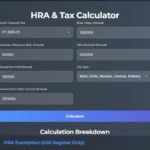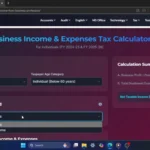Income Notes:
Contents
Income Notes:1. Salary or wages2. Allowances, Earnings, Tips, Directors’ fees etc3. Employer lump sum payments4. Employment Termination Payments (ETP)5. Australian Government allowances and payments (Taxable)6. Australian Government pensions and allowances (Taxable)7. Australian annuities and superannuation income streams8. Australian Superannuation Lump Sum Payments9. Attributed personal services income10. Gross interest11. Dividends12. Employee share schemes (Like ESOP Benefit)13. Income from partnerships and trusts14. Personal Service Income (PSI)15. Net income or loss from business16. Deferred non-commercial business losses17. Net farm management deposits or repayments18. Capital Gains19. Foreign entities20. Foreign source income and foreign assets or property21. Rent
1. Salary or wages
- Commissions
- Bonuses
- Income from part-time or casual work
- Parental leave pay
- Dad-and-partner pay
- Lost salary or wages paid under:
- Income protection policy
- Sickness or accident insurance policy
- Workers’ compensation scheme
2. Allowances, Earnings, Tips, Directors’ fees etc
- All Employment allowances
- Tips, gratuities, consultation fees, payments for voluntary and other services
- All other payments from which tax was not withheld, such as:
- Commissions, bonuses
- Casual job income
- Insurance payments (Income protection, Sickness and Accident policies)
3. Employer lump sum payments
- Unused annual leave
- Unused long service leave
4. Employment Termination Payments (ETP)
- ETP Includes:
- Death benefit ETPs
- Foreign ETPs (Note: Different tax rules may apply)
- Late termination payments
- ETP Does NOT Include:
- Foreign termination payments (these are typically dealt with under foreign income rules or specific sections, separate from standard ETPs)
- ETPs you received as the trustee of a deceased estate
- Departing Australia superannuation payments
5. Australian Government allowances and payments (Taxable)
- JobSeeker payment
- Youth allowance
- Austudy payment
- Parenting payment (partnered)
- Partner allowance
- Special benefit
- Widow allowance
- Farm household allowance
- An education payment (any of the following when you were 16 years old or older):
- ABSTUDY living allowance
- Payment under ‘Veterans Children Education Scheme’
- Payment under ‘MRCA Education Allowance’
- Commonwealth education or Training payments
- Youth disability supplement component of:
- Youth allowance
- ABSTUDY living allowance
- Income support component from a Community Development Employment Project (CDEP)
- CDEP scheme participant supplement
- Disaster recovery allowance
- Disaster income support allowance for special category visa (subclass 444) holders
- (But does not include any COVID-19 disaster payment, as these often had special tax treatment – verify specific payment rules)
6. Australian Government pensions and allowances (Taxable)
- Age pension
- Bereavement allowance
- Carer payment
- Disability support pension (if you have reached age-pension age)
- Education entry payment
- Parenting payment (single)
- Age service pension
- Income support supplement
- Defence Force income support allowance (DFISA)
- DFISA-like payment from the Department of Veterans’ Affairs (DVA)
- Veteran payment
- Invalidity service pension (if you have reached age‑pension age)
- Partner service pension
- (Do not include any Australian Government pensions or allowances that are specifically designated as non-taxable)
7. Australian annuities and superannuation income streams
- Australian annuities (also called non-superannuation annuities)
- Australian superannuation income streams paid to you by:
- Australian superannuation funds
- Retirement savings account (RSA) providers
- Life insurance companies
8. Australian Superannuation Lump Sum Payments
- Australian superannuation lump sum payments or superannuation death benefit payments are paid to you by:
- Superannuation funds
- Approved deposit funds
- Retirement savings account providers
- Life insurance companies
- From the Superannuation holding accounts special account
- Payments received from unclaimed money registers (if originally from super)
- (Note: Tax on superannuation withdrawals can be complex. For example, the taxable component of a super lump sum for someone under 60 may be taxed at marginal rates with an offset, or concessional rates depending on age and preservation status. For those 60 and over, lump sums from a taxed fund are often tax-free. Always check specific rules for your situation.)
9. Attributed personal services income
- Includes:
- Personal services income (PSI) is a reward for an individual’s personal efforts or skills, which is paid to their personal services entity (a company, partnership, or trust).
- If PSI is paid to a personal services entity, the net income (after certain deductions) is attributed to the individual who performed the services, unless the entity is conducting a Personal Services Business (PSB) or the income was promptly paid as salary to the individual.
- Does not Include:
- Personal services income received as a sole trader (this is reported under item 14 or 15).
10. Gross interest
- Bank Interest (Interest from savings accounts, Term deposits, and Cash Management Accounts)
- ATO Interest (e.g., interest on early payments or overpayments)
- Interest from children’s accounts if you use the funds as if they were yours
- Tax file number (TFN) amounts withheld (amounts withheld by financial institutions because you did not provide your TFN or ABN to them)
- Interest from other sources (e.g., loans to individuals, debentures)
- Interest from a foreign source (also reportable at foreign income section)
11. Dividends
(Refer Page No 14 – WordPress note: Consider linking this or embedding content)
- Dividends and distributions from Australian companies
- Dividends applied under a dividend reinvestment plan (DRP)
- Bonus shares that qualify as dividends
- Distributions by a corporate limited partnership
- Dividends paid by a corporate unit trust
- Dividends paid by a public trading trust
- Dividends paid by a listed investment company
- (Formula: Total Dividend Income for tax purposes = Unfranked Amount + Franked Amount + Franking Credit)
12. Employee share schemes (Like ESOP Benefit)
- Employee Share Schemes (ESS) offer employees shares or options to buy shares in the company they work for.
- This can give employees the ability to purchase shares at a discounted price or provide options to buy shares in the future.
- Discount Calculation: Discounts received on ESS interests are generally assessed as income. The discount is typically calculated as:
- Market Value of ESS interest when acquired (or at a deferred taxing point) – Amount paid by the employee to acquire the ESS interest.
13. Income from partnerships and trusts
- Your share of income or a loss from a partnership
- Your share of income from a Trust (including capital gains and foreign income)
- Any amounts of tax paid by the partnership or trust on your behalf (e.g., TFN withholding tax)
- Your share of any tax offsets, such as the ‘national rental affordability scheme’ (NRAS) tax offset.
- (You can typically get details of your Trust income distribution from the Annual Tax Statement provided by the trust or from the ATO prefill service.)
- To Download an Annual Tax Statement (Example for some listed trusts):
- Go to the website of the relevant share registry (e.g., Link Market Services, Computershare. The website https://www.delisted.com.au/ might help identify the registry for some entities, but always verify through official channels).
- Search for the Trust using its ASX code or name to find its registry details.
- Navigate to the specific Trust’s page on the registry website.
- Use your Holder Identification Number (HIN) or Securityholder Reference Number (SRN) and Postcode to log in.
- You should then be able to find and download your Annual Tax Statement, often from a “Payment History” or “Statements” section.
14. Personal Service Income (PSI)
If you are selling your specific skills, knowledge, or time for payment, it is likely you are earning PSI.
- Examples of PSI activities: Providing services as a financial professional, IT consultant, engineer, construction worker, medical practitioner, entertainer, or professional sportsperson, often as a sole trader or through a contract.
- PSI Includes: Income earned from your personal efforts, skills, or expertise, whether as a sole trader or through a contract where you are paid for these personal attributes.
- PSI Does NOT Include: Income generated by an entity that was promptly paid to you (the individual who performed the services) as an employee’s salary (this would be reported at item 1 or 9).
PSI can be reported differently based on how it’s received:
- Attributing PSI (if PSI rules apply and income not promptly paid as salary):
- This is PSI earned by a Personal Services Entity (PSE) that is attributed back to the individual who performed the service.
- Declare this at Item 9 (Attributed personal services income).
- Non-Attributing PSI / PSI received as a Sole Trader:
- This is PSI earned directly by you as a sole trader. Tax (PAYG) may or may not have been withheld.
- This income is reported as ABN income in your individual tax return.
- Declare gross PSI (before expenses) at Item 14 (Personal services income).
- Declare net PSI (after allowable deductions) at Item 15 (Net income or loss from business).
- (There is no separate business tax return for sole traders; it’s part of your individual tax return).
15. Net income or loss from business
This section is for income earned as a sole trader or in partnership (your share).
- Income from your sole trader business (after deducting business expenses)
- Income from primary production business
- Income received under a PAYG voluntary agreement
- Income from amounts withheld because you did not quote your Australian business number (ABN)
- Income of an independent contractor working under a labour hire arrangement
- Income received from Indigenous Student Success Programme (formerly CDEP) as business income
- Income received from Translating and Interpreting Service National (TIS National) of the Department of Home Affairs (if as a contractor)
- Income from promotional activity as an artist or sportsperson (if as a business)
- Income from any other business activities not listed above
16. Deferred non-commercial business losses
(Non-commercial Business generally refers to activities that are more like a hobby or have limited commercial prospects according to ATO tests).
- Losses from activities the ATO deems “non-commercial business activities” generally cannot be offset against your other income (like salary or investment income) in the same year. Instead, these losses are carried forward (“deferred”) and can only be offset against future income from that same specific non-commercial business activity.
- To deduct deferred non-commercial business losses from other assessable income (such as salary and wages) in the current year, the following conditions generally need to be met:
- Your adjusted taxable income (ATI) for the individual must be less than $250,000, AND
- The business activity must pass at least one of the four “commerciality tests” OR
- The Commissioner of Taxation has exercised discretion to allow you to claim the loss.
- This provision applies to individuals conducting a business either as a sole trader or as a partner in a partnership.
- This provision does not apply to losses from hobbies (which are not businesses) or passive investment income.
Four Commerciality Tests:
- Assessable Income Test:
- Assessable income from the business activity during the financial year is $20,000 or more.
- Profits Test:
- The business activity has resulted in a taxable profit in at least three out of the past five years (including the current year).
- Real Property Test:
- The total reduced cost base of real property or an interest in real property used on a continuing basis in carrying on the business activity is $500,000 or more.
- (Does not include dwellings and their adjacent land that are mainly used for private purposes).
- Other Assets Test:
- The total value of other assets (excluding real property and cars/motorcycles etc.) used on a continuing basis in carrying on the business activity is $100,000 or more. This includes depreciating assets, trading stock, leased assets, and intellectual property.
- (Does not include land or real property or interests in real property, cars, motorcycles, or similar vehicles unless they are essential and integral to the business activity).
17. Net farm management deposits or repayments
- Farm Management Deposits (FMDs) help primary producers deal with inconsistent income due to factors like natural disasters, climate variations, and market changes.
- Income deposited into an FMD account is generally tax-deductible in the financial year the deposit is made. It becomes taxable income in the financial year when it is withdrawn.
18. Capital Gains
(Refer Page No 16 – WordPress note: Consider linking this or embedding content)
- Report net capital gains here. This is broadly the total capital gain for the year less total capital losses for the year (including any unapplied net capital losses from earlier years), then less any applicable CGT discount or small business CGT concessions.
19. Foreign entities
- Income and gains from foreign companies where the taxpayer, alone or with associates, has:
- Directly or indirectly a 10% or more interest (e.g., under Controlled Foreign Company – CFC rules), OR
- Had effective control of a foreign company.
- This often involves complex attribution rules under Australia’s international tax regime.
20. Foreign source income and foreign assets or property
- This includes a broad range of income such as:
- Foreign source pensions or annuities (after deducting any Undeducted Purchase Price – UPP).
- Distributions from foreign trusts.
- Employment income earned overseas.
- Interest, dividends, royalties, or rent from foreign sources.
- Report any foreign tax paid as you may be entitled to a foreign income tax offset.
21. Rent
(Refer Page No 15 – WordPress note: Consider linking this or embedding content)
- Gross rental income received from investment properties located in Australia.
- Related expenses are claimed as deductions to arrive at net rental income or loss.










